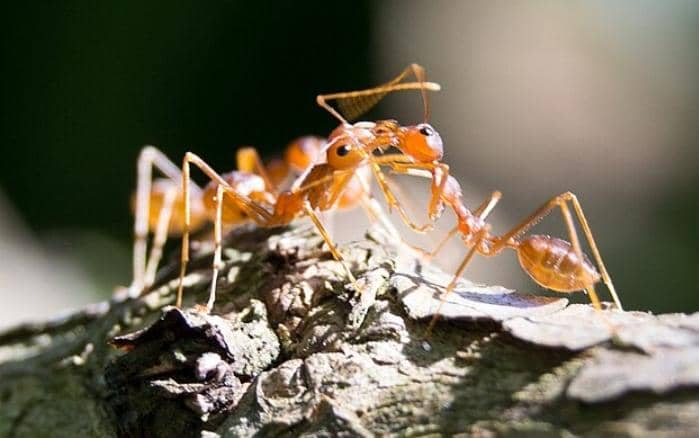Ants are remarkable creatures that exhibit complex social behaviors and communication systems strikingly similar to those of humans. These tiny insects, with colonies that can number in the millions, have evolved intricate ways of organizing their societies, gathering resources, and ensuring the survival of their species. Let’s explore some fascinating parallels between the lives of ants and humans.
Ants communicate using a variety of methods, including pheromones, touch, and even sound vibrations. They use chemical trails to guide other ants to food sources, much like humans use maps and directions. Ants also engage in “antennal kissing,” where they exchange information about the needs of the colony and the tasks they should perform.
This form of communication is reminiscent of how humans interact through touch, such as handshakes and hugs.
Ant colonies are divided into castes, each with specific roles and responsibilities. There are workers who gather food, soldiers who defend the colony, and even specialized ants that care for the young. This division of labor allows the colony to function efficiently, much like how human societies are organized into different professions and roles.
Just as humans specialize in various fields to contribute to their communities, ants have evolved to perform specific tasks for the benefit of the entire colony.
Ants build intricate nests, often underground, that serve as their homes. These nests can be incredibly complex, with multiple chambers and tunnels designed for specific purposes, such as nurseries, food storage, and waste disposal.
The construction of ant nests is a testament to their engineering prowess and their ability to work together to create a functional living space. Similarly, humans have developed sophisticated architectural techniques to build homes, cities, and infrastructure that meet their needs and preferences.
Ants engage in territorial disputes and even wage war against other colonies. They use pheromones to mark their territory and will aggressively defend it against intruders. When two colonies come into conflict, they may engage in battles that can last for days or even weeks. Humans, too, have a long history of warfare and conflict resolution, often using force to protect their interests and settle disputes.
Ants are known for their tireless efforts in gathering food and resources for their colony. They work together to locate and transport food back to their nest, often following pheromone trails laid by scout ants.
This behavior is reminiscent of how humans organize markets, trade, and commerce to ensure a steady supply of resources for their communities. Both ants and humans have developed sophisticated strategies for gathering and distributing essential goods and materials.
In conclusion, the lives of ants and humans, though vastly different in scale, share remarkable similarities in their social structures, communication systems, and resource-gathering strategies.
By studying the complex behaviors of ants, we can gain insights into the evolution of social intelligence and the underlying principles that govern the organization of living beings. The parallels between ants and humans serve as a testament to the incredible diversity and adaptability of life on our planet.

